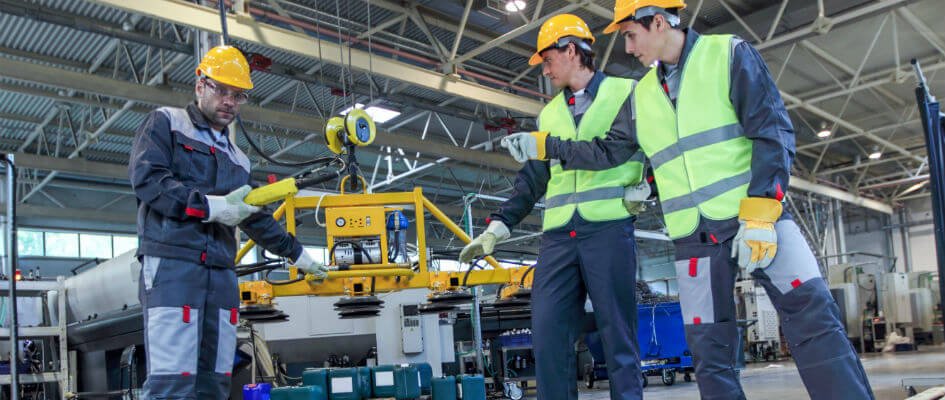Industrial safety is a multifaceted discipline that seeks to protect workers, assets, and the environment from the myriad hazards inherent in modern industrial operations. In today’s rapidly evolving landscape, ensuring safety is not only a regulatory mandate but also a cornerstone of sustainable business practices.
Understanding Industrial Safety
At its core, industrial safety involves the systematic identification, evaluation, and control of risks in the workplace. Whether it’s a manufacturing plant, a construction site, or a chemical processing facility, each environment presents unique challenges. The aim is to minimize accidents and incidents through rigorous risk management strategies, ongoing training, and the integration of modern technologies.
Key Challenges in Industrial Safety
Industrial environments face a range of hazards, including:
- Mechanical and Equipment Hazards: Faulty machinery, improper maintenance, and lack of safety guards can lead to severe injuries.
- Chemical and Substance Exposure: Exposure to hazardous chemicals requires strict handling protocols and advanced protective measures.
- Ergonomic and Physical Strains: Repetitive tasks and heavy lifting can result in musculoskeletal disorders and long-term injuries.
- Environmental Hazards: Factors like extreme temperatures, noise, and poor ventilation can compromise both health and productivity.
Effective Risk Management Strategies
1. Comprehensive Risk Assessments
Regular risk assessments are fundamental to identifying potential hazards before they result in accidents. By systematically evaluating processes and equipment, organizations can prioritize risks and develop targeted mitigation plans.
- Preventative Maintenance: Scheduled inspections and proactive maintenance help identify wear and tear before equipment failures occur.
- Hazard Analysis: Techniques such as Failure Mode and Effects Analysis (FMEA) and Job Hazard Analysis (JHA) provide insights into potential risk factors and their impacts.
2. Employee Engagement and Training
An informed and well-trained workforce is the first line of defense against industrial hazards. Continuous training programs help employees recognize risks and respond effectively in emergency situations.
- Regular Safety Drills: Conducting routine drills ensures that employees are familiar with emergency procedures.
- On-the-Job Training: Hands-on training tailored to specific equipment and processes reinforces safety protocols and promotes best practices.
- Open Communication: Encouraging employees to report near-misses and safety concerns fosters a culture of proactive risk management.
3. Integration of Advanced Technologies
Modern technologies are revolutionizing industrial safety by providing real-time data and predictive insights.
- IoT and Sensor Networks: Sensors installed on machinery and throughout facilities can monitor environmental conditions, machinery performance, and worker health indicators.
- Artificial Intelligence: AI-driven analytics help in predicting equipment failures and identifying patterns that may signal emerging safety risks.
- Wearable Devices: Wearables not only track vital signs and movement but also provide alerts in hazardous conditions, thereby reducing the response time in case of emergencies.
4. Regulatory Compliance and Continuous Improvement
Adhering to national and international safety regulations is critical to maintaining high safety standards. Organizations should strive not only to meet these requirements but to exceed them through continuous improvement initiatives.
- Regular Audits: Internal and external audits ensure that safety protocols are up-to-date and effectively implemented.
- Certifications: Obtaining certifications like ISO 45001 demonstrates a commitment to occupational health and safety management.
- Feedback Mechanisms: Leveraging feedback from employees and safety audits helps refine processes and integrate best practices over time.
Building a Culture of Safety
Beyond policies and procedures, fostering a safety-oriented culture is essential for long-term success. This involves:
- Leadership Commitment: Leaders must prioritize safety and set a strong example by following protocols and investing in safety initiatives.
- Employee Empowerment: Empowering workers to take an active role in safety discussions and decisions creates a collaborative environment focused on continuous improvement.
- Transparent Communication: Open dialogue about safety issues and incident learnings helps build trust and encourages proactive hazard reporting.
Conclusion
A holistic approach to industrial safety goes beyond the mere compliance with regulations—it is about creating an environment where risks are systematically managed, employees are continuously engaged, and modern technologies are harnessed to predict and prevent hazards. By integrating comprehensive risk assessments, robust training programs, advanced technological solutions, and a culture of continuous improvement, industries can not only safeguard their workforce but also enhance productivity and operational excellence.
Prioritizing industrial safety is an investment in the future—one that pays dividends in reduced accidents, improved efficiency, and a stronger, more resilient organization.
Discover more from HSEProHub
Subscribe to get the latest posts sent to your email.



